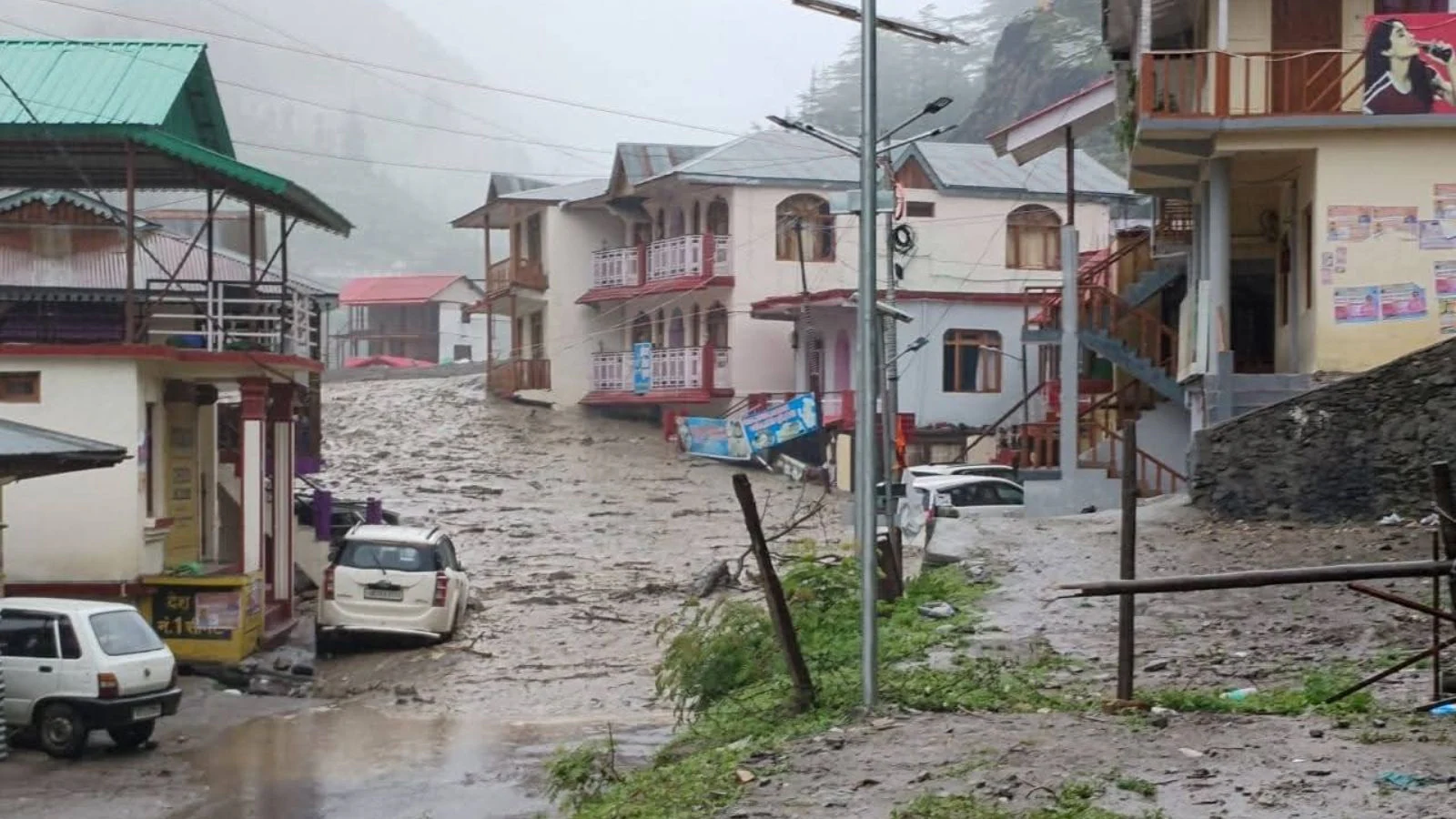In the early hours of August 5, 2025, the serene hills of Uttarakhand’s Uttarkashi district were shattered by two devastating cloudbursts, one near Dh
In the early hours of August 5, 2025, the serene hills of Uttarakhand’s Uttarkashi district were shattered by two devastating cloudbursts, one near Dharali village and another in Sukhi Top. These sudden, intense downpours unleashed flash floods and landslides, leaving a trail of destruction in their wake. Recent reports indicate that at least four people lost their lives, with over 50 others reported missing, including 8 to 10 Indian Army soldiers stationed at a camp in the lower Harsil area. The disaster has swept away homes, hotels, and infrastructure, plunging the region into chaos and highlighting the growing threat of extreme weather events in the Himalayan state.
The cloudbursts struck the upper catchment of the Kheer Ganga river, triggering torrents of muddy water that tore through Dharali, a village on the pilgrimage route to Gangotri Dham. Local residents described scenes of panic as floodwaters reduced buildings to rubble and blocked critical roads, including the Uttarkashi-Harsil route. According to official statements, approximately 20 to 25 hotels and homestays were completely destroyed, and 130 people have been rescued so far by combined efforts of the Indian Army, National Disaster Response Force (NDRF), State Disaster Response Force (SDRF), and Indo-Tibetan Border Police (ITBP). However, ongoing heavy rainfall and blocked roads—163 across the state, including five national highways—have severely hampered relief operations.
Cloudbursts, defined as sudden rainstorms delivering over 10 centimeters of rain in an hour over a small area, are not uncommon in the Himalayas. Experts attribute their increasing frequency and intensity to climate change, which fuels greater water evaporation and the formation of dense cumulonimbus clouds. An official from the India Meteorological Department noted that global heating is exacerbating such events, a trend evident in Uttarakhand’s history of devastating cloudbursts, like the 2013 Kedarnath disaster that claimed over 6,000 lives. Unplanned development in fragile mountainous regions, such as rampant construction of roads and hotels, has further amplified the damage, turning natural events into human catastrophes.
The immediate aftermath of the Uttarkashi cloudbursts has seen a robust response from authorities. Uttarakhand Chief Minister Pushkar Singh Dhami described the incident as “deeply painful” and assured that rescue operations are being conducted on a war footing. Prime Minister Narendra Modi and Home Minister Amit Shah have also pledged full support, with additional NDRF and ITBP teams deployed to the region. Despite these efforts, the loss of life and infrastructure underscores the challenges of responding to disasters in remote, high-altitude areas where weather conditions often prevent helicopter evacuations.
The broader implications of this disaster point to an urgent need for systemic change. Recent reports highlight that Uttarakhand’s vulnerability to cloudbursts and landslides is worsened by unchecked development. The 2021 Joshimath subsidence, caused by poorly planned infrastructure projects, serves as a stark reminder of the risks. Environmentalists argue for stricter regulations on construction in ecologically sensitive zones and the adoption of early-warning systems to mitigate future losses. The India Meteorological Department’s orange alert for heavy rainfall across seven districts, including Dehradun and Haridwar, signals that the monsoon season is far from over, urging communities to remain vigilant.
For the people of Uttarakhand, the road to recovery will be long. The destruction of homes and livelihoods in Dharali and surrounding areas has left families grappling with loss, while blocked roads continue to isolate communities. Farmers and herders, already battered by the monsoon’s fury, face an uncertain future. As rescue teams work tirelessly to locate survivors and clear debris, the disaster serves as a sobering call to action. Strengthening disaster preparedness, investing in sustainable development, and addressing the root causes of climate-driven extreme weather are critical steps to protect Uttarakhand’s fragile ecosystem and its people.
This latest tragedy in Uttarkashi is a stark reminder of nature’s power and humanity’s responsibility to adapt. As the state mourns its losses, the focus must shift to building resilience and ensuring that such devastation does not become a recurring nightmare. The voices of locals, echoing through the debris-laden streets, demand not just relief but a commitment to a safer, more sustainable future.



COMMENTS